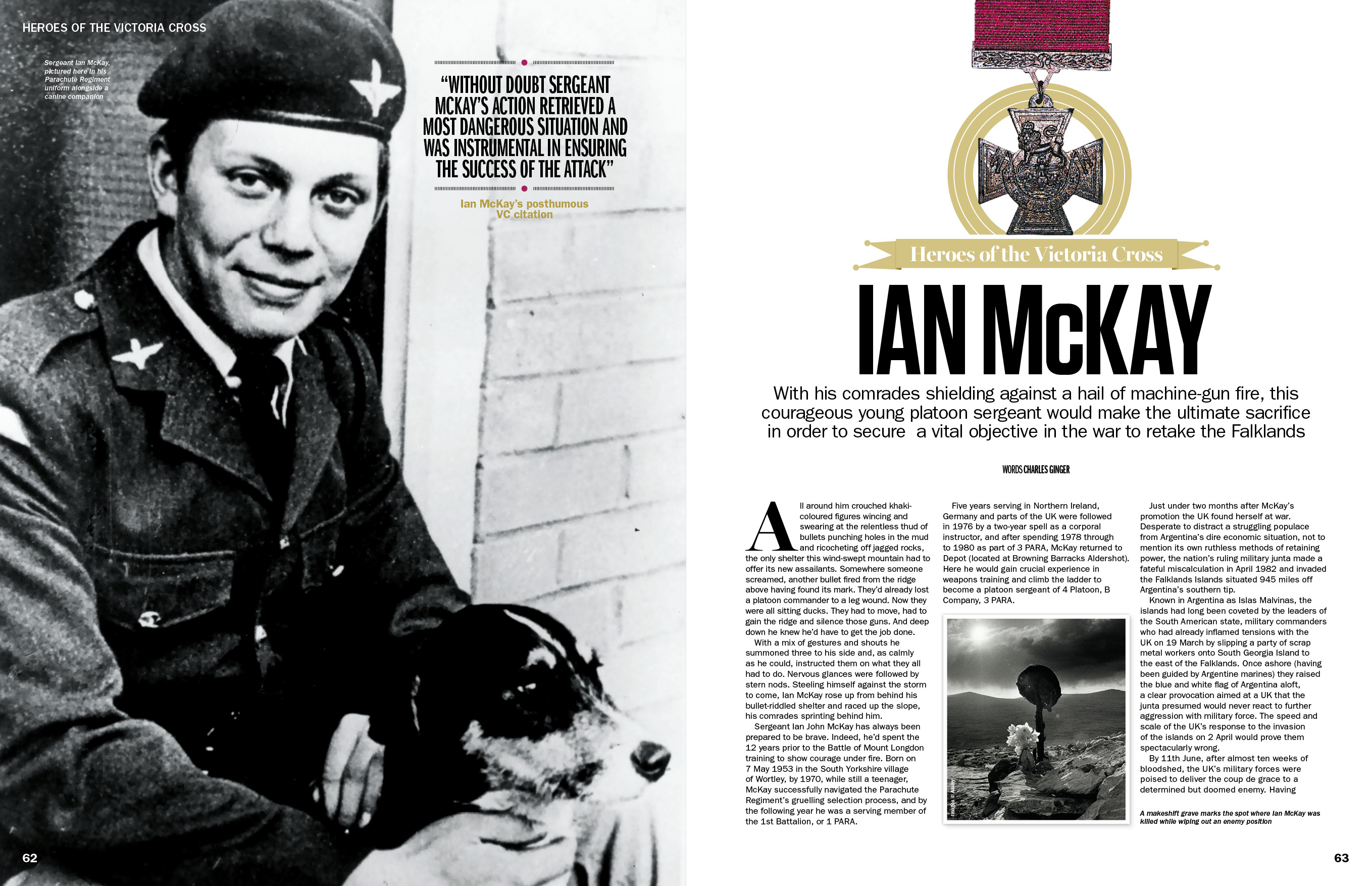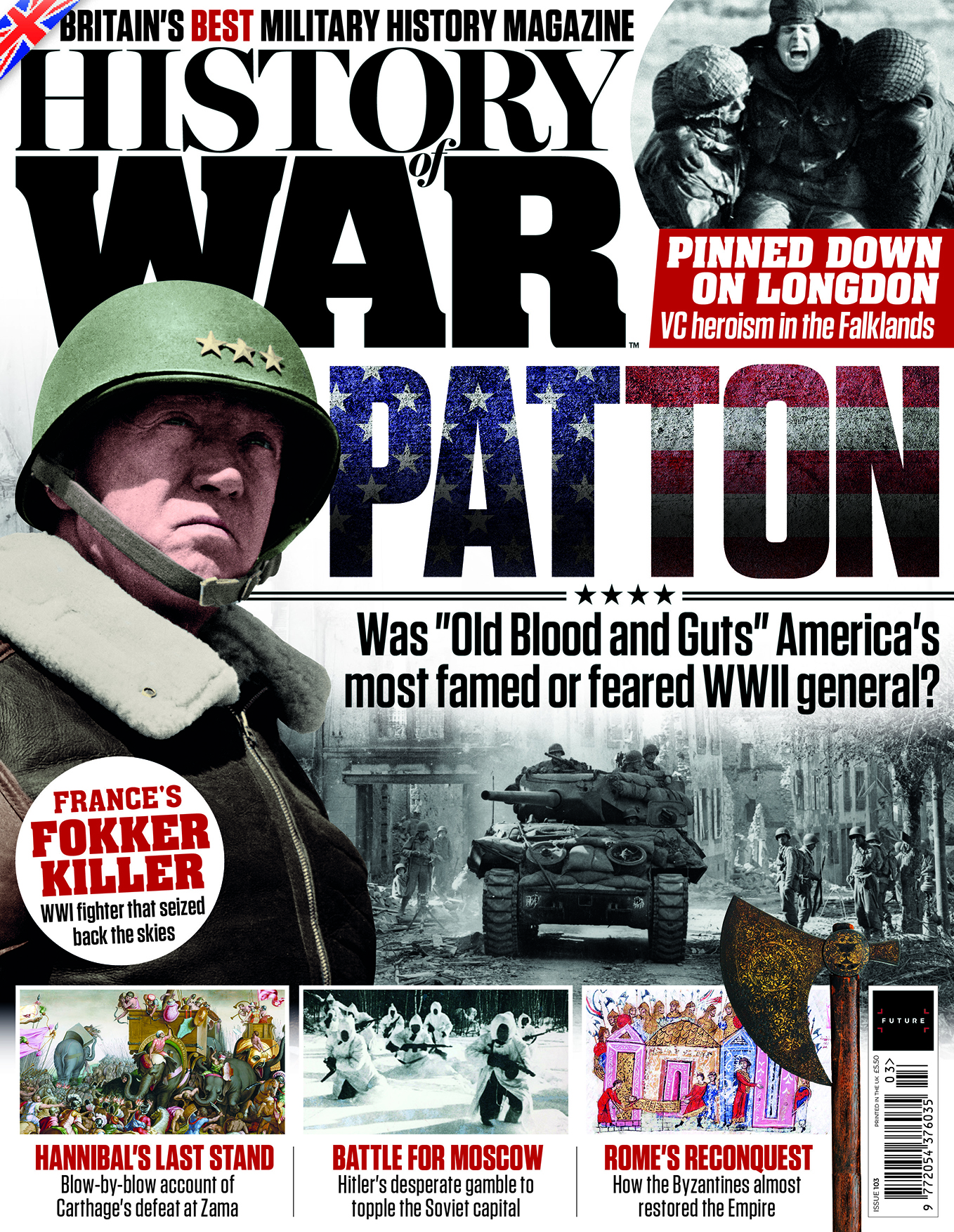Patton: The US Army's toughest and most feared WWII general?
Inside the latest History of War magazine: Why was "Old Blood and Guts" feared by both allies and enemies alike?

Inside History of War magazine issue 103, on sale now, read about the complex character of George Smith Patton Jr — simultaneously the most celebrated and controversial Allied generals who served during the Second World War. A dashing cavalryman, fencer and Olympic pentathlete, Patton's early study of armoured warfare during the First World War made him one of the US Army’s foremost experts on the use of tanks on the battlefield.
For this cover feature, History of War spoke with Kevin Hymel, historian for the U.S. Army, and author and WWII expert Steve Zaloga. They discuss Patton's tactical prowess on the battlefield, as well as how he earned a fearful reputation among some of his men — even if, as Eisenhower would later say, he "struck terror at the hearts of the enemy."






Also inside this new issue, you can take a look inside the Nieuport 17, the fighter plane that helped stop the Fokker Scourge, a period of Germany's overwhelming air superiority during the First World War.
Related: Read a free issue of History of War here
Elsewhere in this issue you'll find a detailed account of the rise and fall of the Byzantine Empire — the last remnants of Ancient Rome — and how at the Battle of Dyrrhachium (A.D. 1081) the ailing imperial army came to blows with a Norman invasion force. You can also read our in-depth account of Hitler's attack on Moscow in the winter of 1941 — this was the high water mark of the Nazi invasion of the Soviet Union.
Take a look below for more on a few of our big features in issue 103.
Patton: The story of "Old Blood and Guts"

In the spring of 1945, Nazi Germany was in its death throes. As the last weeks of the Second World War in Europe played to their inevitable end, the U.S. Third Army continued across the German frontier and deep into the Reich.
Get the world’s most fascinating discoveries delivered straight to your inbox.
At times German troops mounted stiff resistance, and on March 1 the Third Army commander, General George S. Patton, Jr., received an order to bypass the city of Trier. It was too stoutly defended, the communication read, and would require four divisions to capture. A swift reply, more of a riposte, went out immediately: "Have taken Trier with two divisions. Do you want me to give it back?"

Become a subscriber to get your copy of History of War magazine delivered straight to your door before it appears in stores and even save money on the usual price — starting at just $3.00 for 3 issues (followed by $28.50 per quarter).
The witty barb was vintage George Patton. Since activating Third Army on August 1, 1944, the general had conducted a lightning sweep across France, plunging into Germany, capturing hundreds of thousands of prisoners, and inflicting a like number of killed and wounded on the enemy. Ten days after receiving the directive regarding Trier, Third Army had cleared the area north of the River Moselle and linked up with Seventh Army to the south in a rapid sweep through the Palatinate and the Saarland, bagging another 100,000 prisoners.
Read the full feature in the latest History of War
Normans vs Byzantines

When Emperor Alexius Comnenus marched his army to confront the Norman warlord, Robert Guiscard, his formidable Varangian Guard learned the hard way that too much aggression could sometimes be a major weakness in battle
Comnenus ascended the throne on April 4, 1081, when he was just 24 years old. However he was already a proven general. Since his first battle at 14, the young emperor had not yet seen defeat. Though no matter how capable of a military commander he was, Alexius inherited an empire that was a shadow of its former self. The defeat at Manzikert a decade before had dealt a savage blow that the Byzantines would never truly recover from.
Across the Adriatic Sea, Robert Guiscard smelled blood in the water like a predatory shark. The Norman Duke may have been aware of the martial prowess of the new emperor, but it would not deter him in the slightest. Well aware of the chaos within the borders of the empire prior to Alexius’ ascension, Robert felt that Constantinople was ripe for the picking, especially for a superb general like himself.
In History of War, get a blow-by-blow account of the Battle of Dyrrhachium
Nieuport 17: France's Fokker killer

The Nieuport 17 entered service in the spring of 1916, when the Entente air forces were on the backfoot. The Fokker Scourge had been ongoing for months, with the German Fokker Eindecker holding air superiority over the Western Front. Together with the British de Havilland DH2, the Nieuport 17 put an end to the Scourge, winning back air superiority for the British and French just in time for their flying services to play important roles in the Battle of the Somme over the summer.
With speeds up to around 100mph (160km/h) and great agility, it was an excellent fighter even if lightly armed, and the type kick-started the careers of many aces, including Georges Guynemer, Charles Nungesser, and Mick Mannock. Even into the spring of 1917, British ace Albert Ball preferred his old Nieuport over his cutting-edge SE5a, often flying it alone looking for prey.
So successful was the type that the Germans even reverse engineered several captured airframes. They built their own Nieuport 17s and operated them as the Siemens-Schuckert D.I from early 1917, although mostly as fighter trainers.
Take a look inside the Nieuport 17 in the latest History of War

Timothy is Editor in Chief of print and digital magazines All About History and History of War. He has previously worked on sister magazine All About Space, as well as photography and creative brands including Digital Photographer and 3D Artist. He has also written for How It Works magazine, several history bookazines and has a degree in English Literature from Bath Spa University.


